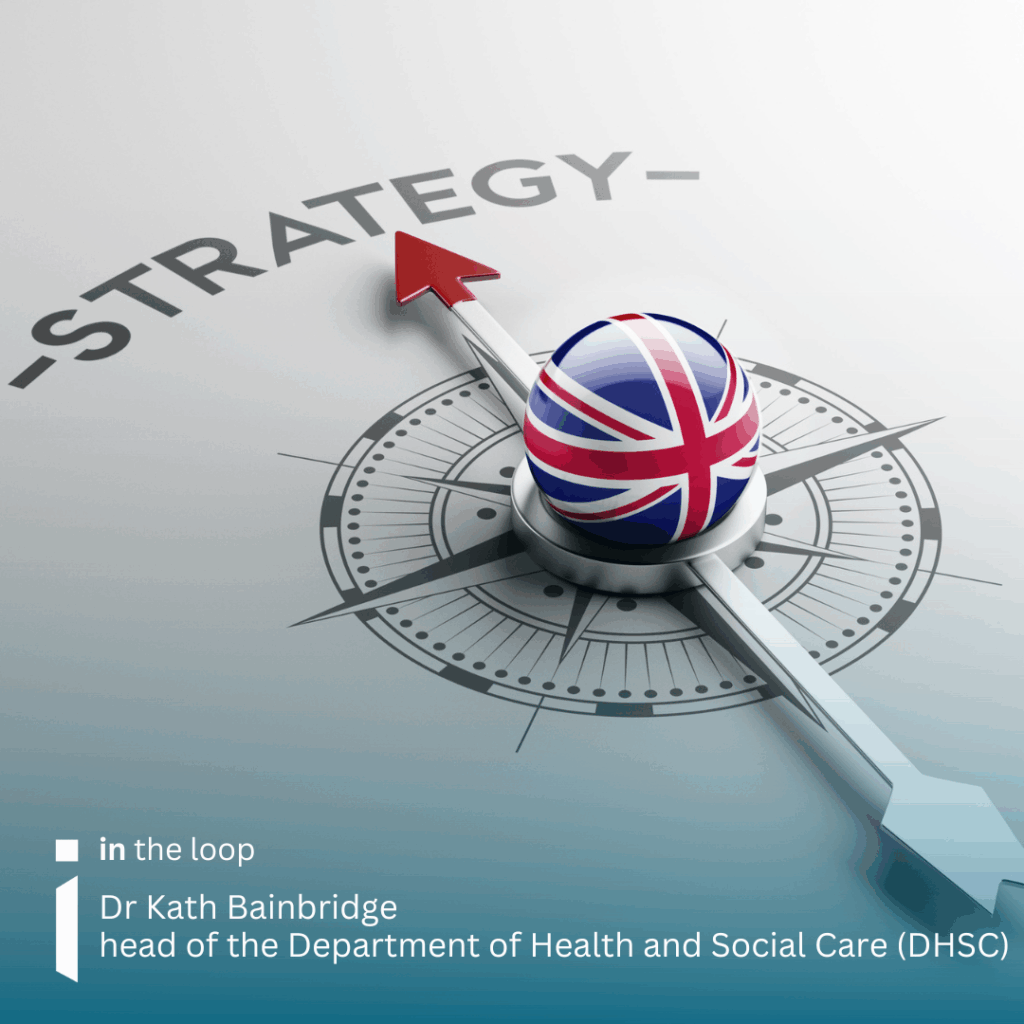Four years of the UK’s Rare Diseases Framework – what progress has been made?
Estimated reading time: 8 minutes

We reflect on insights from Dr Kath (Katherine) Bainbridge, head of the Department of Health and Social Care’s (DHSC), as she shared what progress is being made against the UK Rare Diseases Framework at a recent Westminster Health Forum Policy Conference
Increasing awareness of rare diseases among healthcare professionals and improving diagnosis and access to specialist care and treatment were identified as key priorities for theUK’s five-year Rare Diseases Framework.
As we move into the framework’s final year, Dr Kath Bainbridge delivered a conference keynote session on progress made on England’s 2025 action plan, and what’s ahead for 2026.
The framework’s priorities and themes were arrived at following a “national conversation” with the rare diseases community to identify their key concerns and where improvements were needed, an introduction to the keynote session advised.
Progress made in 2025
Speaking at a recent Westminster Health Forum Policy Conference, Dr Kath Bainbridge, head of the Department of Health and Social Care’s (DHSC) rare diseases and emerging therapies policy team, began by highlighting what’s been achieved so far in 2025.
“TheGeneration Study,a pilot of whole genome sequencing of newborns in the NHS, is currently recruiting at 27 hospitals across 18 NHS Trusts,” she explained.
“We have also introducedGeNotes,a digital resource offering information on rare diseases for healthcare professionals. This has been very successful, and it has been accessed by more than 370,000 people worldwide.”
To further assist with improving awareness of rare diseases among healthcare professionals, four new resources have been added toNHS England’s Genomic Education Programme Knowledge Hub,Dr Bainbridge advised.
“We can also report on the 1,360 new complex diagnoses which have been returned viaGenomics England’s clinical researchinterface,” she continued. “In addition, five newRare Disease Collaboration Networkshave been set up within the NHS.”




Improving coordination of care
Dr Bainbridge also spoke about new actions for 2025. The first is around coordination of care and is something that could substantially improve patient experience.
“NHS England are putting in place incentives for services to create clinics for multi-system disorders,” she told the conference, “… and this will mean people living with rare conditions can see multiple specialists on a single day.
“MHRA are also putting in place actions around the reform of the clinical trials regulations specific to rare diseases,” she added. “We have also introduced an action from NHS England on an operational framework for individualised therapies in the NHS.”
A key strength of England’s Rare Diseases Framework Delivery Group is bringing together partners including MHRA, NICE, DHSC, the Office for Life Science, Cell and Gene Therapy Catapult and a number of research initiatives, Dr Bainbridge explained.
“These all come together to create an ecosystem to support progress and rare disease therapies reaching patients within the NHS.”
The world’s first personalised CRISPR gene editing therapy that was given to an infant with a rare metabolic disorder was also highlighted during her keynote session.
“This treatment has had some really promising results, and it illustrates that therapies that can be designed for a specific individual are really on their way,” she enthused. “But they are going to create challenges, both for regulation, and also for service delivery.”
Trusted information on rare diseases
In this year’saction plan for rare diseases,improving access to trusted information is highlighted as a priority area. Dr Bainbridge explained more about why it’s vital, both for patients and healthcare professionals.
“We know that finding information on rare conditions can be really challenging at the point of diagnosis, but also throughout patients’ lives,” she said.
“While patient support groups and charities can play a really important role in creating information, healthcare professionals can be reluctant to refer people to specific sources of information because they’re concerned about how reliable they might be.
“To address this, we’ve committed to working withPIF TICKand patient support groups to understand how this certification could help with identifying health information that can be trusted.”
The team also commissioned the University of Exeter to carry out research into health inequity and rare diseases. Following a review of 128 studies over 14 years, they found strong evidence of inequity in terms of diagnosis, lack of knowledge among healthcare professionals and lack of information.
Dr Bainbridge shared how her DHSC team worked with the charityBreaking Down Barriersto learn from a focus group of people living with rare diseases. This helped the team to learn more about the challenges the rare disease community can face throughout the patient journey.
“While many of the challenges within the healthcare system are shared between people living with rare conditions and the general population, there are also specific factors that come through conditions being rare. Through this work, we were able to feed what we learned into the NHS 10 Year Health Plan,” she explained.
What’s ahead
In the final year of the UK Rare Diseases Framework, the team will continue to deliver against the 28 live actions and monitor and report on progress, she told the conference.
“We also have a portfolio level evaluation of our action plans underway with input from the rare diseases community on design and metrics,” she said. “This is going to be really important in working out whether our interventions are working and how we might design things in the future.”
A final action plan will be published in February 2026 and Dr Bainbridge shared that the team has “had a commitment from our new government” that it will continue to drive progress on rare diseases. This will include working with the devolved governments to determine next steps following the framework, it was confirmed.
“The voices of the 3.5 million people who live with rare conditions in the UK must stay central to shaping policy and improving services across the health system as we continue our work,” Dr Bainbridge added.
Thinking rare – is enough being done?
A question was asked about whether Dr Bainbridge is confident that there is adequate knowledge and understanding of rare diseases and what’s available within the NHS, particularly in terms of primary care.
“Getting healthcare professionals to think rare is an ongoing challenge and is something that we continue to push on,” she responded.
“But I think through the Genomics Education Programme training materials and resources such as GeNotes, we have made enormous progress. Although there is obviously more work to be done as people do still experience barriers with onward referrals and accessing the care they need.”
The DHSC were also probed on whether they will be more open to increased collaboration with industry in the future for developing the next strategy and rare disease framework.
Dr Bainbridge advised that “industry has a really important role to play” and the Bioindustry Association (BIA) and the Association of the British Pharmaceutical Industry (ABPI) are two key members of the DHSC’s rare diseases stakeholder forum.
“ABI and ABPI have worked closely with us on the UK Rare Diseases Landscape Project and to review the industry contribution to various research and this has been really significant. Particularly around what we call action 25 which is on the access to therapies pathways to review their effectiveness.
“We meet very many people in industry who are extremely dedicated to improving treatments for people living with rare conditions. The contribution from industry is very important and we try and work with them as closely as we can,” she added.
Connect with DHSC
Photo credit (main article image): istock.com/XtockImages
in the loop lets you stay informed with all the latest issues from the world of RARE. To access more in the loop articles click below.

